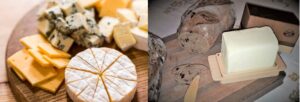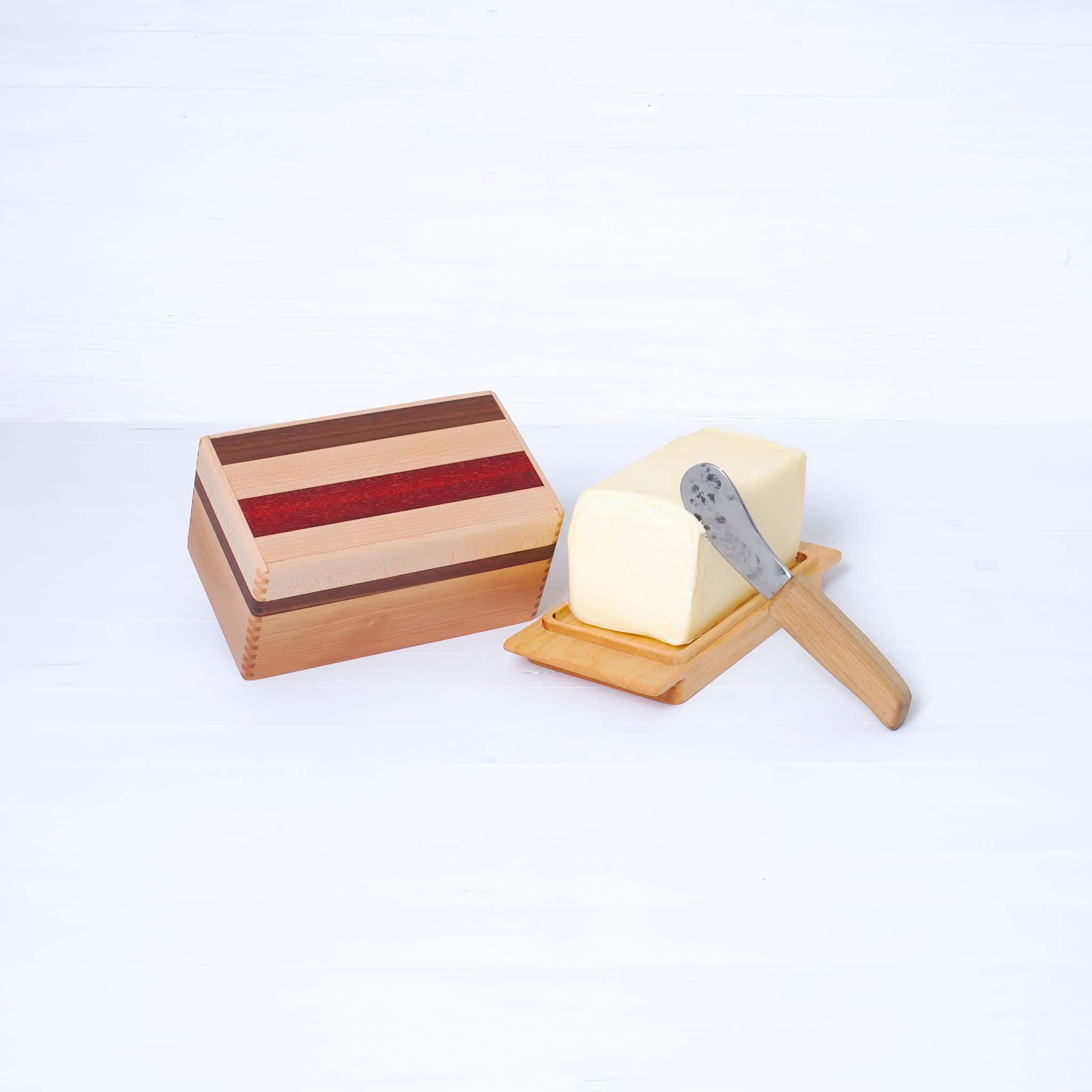For much of the world, butter is so much part of our life that we can hardly imagine not having it.
How is your relationship with butter?
Most of us have grown up with butter at home and love to savor it in various ways: spread onto a slice of fresh-from-the-oven French baguette, on a beautiful golden croissant, on a piece of fruity panettone, or simply melting on top of freshly cooked green beans sprinkled with garlic and parsley.

Antique vertical butter churn
From my youth, I recall seeing my grandmother making butter on the farm with a vertical churn somewhat similar to this one.
My grandparents had a large farm and they sold some of their milk in the village and butter as well.
I estimate that around the late 50’s making butter this way was still part of their life.
Butter or cheese or neither? A note about the different cultural heritages pertaining to these.
During my youth in France, butter was not set on the table during normal meals except if it was called for specific dishes, which was rare.
We ate our meals with bread but without butter, using it almost like as a utensil to help us eat gracefully. Typically, butter was only on the table during breakfast.
However, every single meal ended by serving a small variety of cheeses before a fruit or other dessert was offered.
In Canada, it is more normal to always have butter on the table for all meals if bread is also offered on the table. Bread is rather consumed as a complement to a meal, with butter spread on it.
Furthermore, cheese does not generally have the traditional presence at the end of every meal that I have known in my family.

Which of these two are more important for you? cheese or butter ?
Without overly generalizing or categorizing too much, the history of butter in Ireland as you will see later on, sheds some light on how some Irish immigrants to North America have brought their attachment to butter along with them. To this day, some of their descendants seem to savor butter much like people from other cultural background enjoy a piece of their favorite cheese.

A lump of butter that smells like blue cheese must be very old
A little piece of Irish history:
This lump of butter is around 2,000 years old, and it was found in an Irish peat bog (known as Emlagh bog) near the town of Drakerath, some 50 miles north of the capital Dublin.
It was discovered at a depth of 12 ft / 4 m. The chunk of the ‘spread’ weighs a good 22 lbs. The butter was found to be well-preserved thanks to the conditions in the peat bog which naturally maintains a constant low temperature and low oxygen level.
Researchers have suggested that the chunk was buried deep not so much for preserving it, but rather interred as an offering to the gods.
Historically, the Emlagh bog was located at the crossroads of three ancient Irish kingdoms. So basically, the area pertained to a no man’s land, thus alluding to the possibility that the butter was interred as a peace offering. Moreover, the chunk of the waxy material was not buried in a packed state, which further hints at how it was entombed as a gift to the gods.


